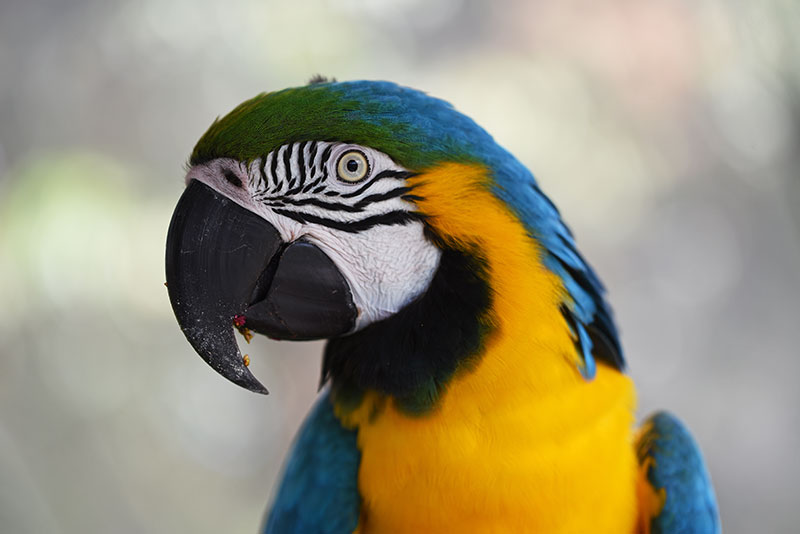
Montmorillonite is a clay from the Montmorillon region of France. Known for its quality and health benefits, it has several uses in aviculture (raising of birds and poultry).
Parrots and other birds have been observed to consume naturally occurring clay in the wild, after eating toxic foods (when there is less food or fewer safer plants available) or to obtain the nutrients they need. Clay is also recommended for parrots living in our homes, to detoxify and add minerals to their diet.
There are several ways to give clay to your parrot:

As clay milk:
Using only wood, glass, ceramic or non-porous plastic utensils:
- Place about a teaspoon of Montmorillonite clay in a glass.
- Add 125 ml of water. Mix well.
- Cover and let rest all night or until the clay has settled at the bottom of the glass.
- The next morning, give the supernatant (the water part) to your parrot as drinking water.
- Repeat for 21 days.
You can get rid of the clay paste at the bottom of the glass in your food waste compost bin or in the trash.
⚠️WARNING: Don’t put the clay down the sink drain or flush it down the toilet, as it can expand and damage your plumbing.
You can repeat the 21-day clay milk detox twice a year. Detoxifying in this way helps promote a healthy digestive system by eliminating toxins, favouring the growth of healthy intestinal flora while eliminating foreign bacteria, and encouraging mucous production, which provides greater protection against various digestive system irritants or abrasions. It’s also a good idea to give your parrot detoxifying clay milk before offering prebiotics and probiotics.

On fresh produce
Given that clay easily retains a large amount of water, it’s easy to serve on sprouts, leafy greens, vegetables and fruits. Clay sticks well to all foods that have been moistened or have a naturally high water content, ensuring that your bird consumes the clay along with the fresh foods. Sprinkle some on your parrot’s food to neutralize the natural toxins (tannins, phenols, etc.) and man-made toxins (pesticides, insecticides, chemical fertilizers) they may contain, all while adding minerals to your bird’s diet.

By foraging
In nature, parrots spend much of the day foraging (searching) for the foods or minerals they need. In our homes, with food always easily accessible, they need something else to do with their time. If they don’t have enough stimulation, they can develop habits or behaviours detrimental to their health and well-being: destroying things, screaming excessively, self-mutilating or performing repetitive behaviour (stereotypies). Giving your bird the opportunity to forage will keep them busy for a good part of the day. It’s also the recommended way of introducing a new food or encouraging them to eat more of a specific food. Offering clay this way takes advantage of your bird’s natural instincts, stimulating their brain while benefiting their body.

In a bowl
You can also simply provide a small amount of clay in a bowl. This lets your parrot choose how much to ingest and when. Be sure to regularly replace the clay to keep it from getting contaminated.
As you can see, there are many ways to give clay to your parrot. Just remember these rules:
- Never use metal utensils or containers. Metal reduces clay’s effectiveness.
- Always tightly close the lid of the container after use to keep the clay from being contaminated by bacteria or toxins in the environment.
- Regularly replace unconsumed clay with fresh clay to avoid contamination.
- Don’t put the clay down the sink drain or flush it down the toilet, as it can damage your plumbing.
- Never give clay to a bird on medication without consulting your avian veterinarian. Clay absorbs most medications, thus reducing their effectiveness or rendering them ineffective.
- During vet visits, don’t forget to mention that you are feeding your parrot clay so that your veterinarian can take this into consideration during the consultation and/or when reviewing your bird’s diet.
Marc-André Villeneuve, Bioecologist

